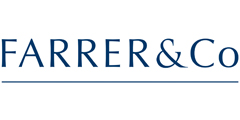
Expert: David Fletcher, Farrer & Co
Key message
Understanding cultural fit and motivations of the members of the agreement prior to the deal is essential for a successful M&A. It comes back to communication and the vision, and it’s about clarity of language, particularly on acquirer’s side, about what to do and where to go next.
Headlines
- There are three pillars of the acquisition – clients, employees, data
- Good quality due diligence is at the core of the deal success
- Know the decision-making basis post-deal
Key themes
The discussion started with referencing cultural fit as one of the defining factors of post-M&A success. A case study of a series of acquisitions was referenced, whereby the absence of cultural fit has resulted in the advisers of the acquired firm leaving the new parent post-acquisition, and half the business was lost. The new parent changed their proposition and strategy straight after acquisition, frustrating both clients and new employees.
The discussion continued into the factors that make the difference between good and bad acquisition. From the point of view of the acquired firm, understanding culture is imperative, although it’s hard to define. As a way to define whether the cultural fit is there, it is advised to try and have 2-3 advisers to work with an acquirer prior to acquisition.
From the potential acquirer’s position, it is important to establish motivation behind the deal of the advisers in the target firm. One of the potential concerns is that they might want to retire. When it comes to a merger, a potential commercial risk can come from the chemistry between the “star” players on each side. If the relationships are tense and possibly processes are different, the difference between their views can be significant.
Mentioning the word ‘merger’ has sparked a debate about whether there is even the possibility of a true merger in the wealth management business. One participant’s view was that in couple of years after the deal, it becomes evident who bought whom. This view was supported by the participants, with the general consensus around the fact that there is no merger as there’s always one person who writes the cheque, and another person who cashes the cheque.
Another important factor to be established preferably before the deal is the basis of decision-making.
“Known risk with an unknown impact: decision-making basis and clarity of thought.”
The people factor becomes evident in a post-deal environment, as the people who are preparing the M&A are not the same ones who would execute tasks on a daily basis in the general course of business.
“Acquirers don’t focus enough on the post-acquisition plan”
The discussion in the first half of the session referred to the first of the pillars to consider in wealth management M&A: employees. The second one is clients. One of the recommendations was to make sure that clients know about the deal before it is public, as it will result in a better retention. This factor ties back in to the employees – it is essential that the most effective advisers are in agreement to pursue the deal. By the 20/80 rule, the others will follow. It is generally considered a bad consequence of the deal if a client ends up with a different adviser as a result.
The third pillar is data.
“It can be disastrous; don’t underestimate it.”
Among the details to consider are aspects of IT systems integration (especially competing) and transitional systems agreements were also raised. Additionally, when buying books of business, the dormant account process could be a potential complication.
“Trying to get a few remaining shares out of the entity that is going to be shut down, which belonged to someone who one lost contact with (dead, for example), is one of the issues when buying the books”
All in all, the success of the coming deal comes back to the quality of due diligence. Assessing what the purchasing side is getting, how far back to look, what can be done with bought data for instance – these are the questions to carefully assess during due diligence.
Tied to that are questions around risks and liabilities and whether they will be carried over with the deal or not. It is linked with the warranty and indemnity cover and the latter is harder to obtain. Who is going to give it must be defined. The disclosures are imperative in defining who is providing the cover.
As it is all about preparation, how much time a firm spends before getting into the M&A process would affect the precision of judgement about the worthiness of the deal. When it comes to timings, it was mentioned that it takes approximately 1 year to establish internally that the deal has to go forward. Following that is the FCA approval process. In total, it’s a 5-year process when selling a wealth management business.
“Cap your lawyers’ fees. If litigation happens and something is wrong, then it’s on the clock”.
As the conversation steered into the regulatory space, the issue of Independent vs. Restricted advice came up. While some concerns were voiced about losing the notion of “Independent” post deal it actually has limited impact.
“You don’t need to stay “Independent”.
These notions were initially designed for the IFAs. At the moment, “conduct risk” is of utmost importance for the FCA. The definitions regarding “Independent” and “Restricted” and potentially different layers of “restricted” have been put aside, and it is advised to wait until MIFID introduces more clarity.
“An uncomfortable middle position prompts a fast-track move to scale up through acquisitions.”
Talking about the M&A activity in the recent times, it was generally agreed that IFA consolidation will go on over the next 5 years. The biggest danger for the middle-sized wealth management businesses is IT.
Most of the discussion was about intra-UK specifics. In the discussion on cross-border and foreign activity, it was noted that some major US firms have already pulled out from overseas markets. The question left open was whether Asian firms would be taking the opportunity instead.
“Who here would like to be bought by a Chinese firm to be a part of an international conglomerate? What’s the premium?”
Finally, when discussing PE-backed acquirers, it was mentioned that their own future isn’t in their hands. This is potentially a source of complication for a target firm as it challenges the clarity of thought as to where to go post-deal.
Conclusions
The recent M&A activity in the UK wealth management space has brought to light multiple challenges that firms are facing both pre- and post-deal. Most of the issues could and should be resolved in the early stages of preparing the deal to avoid adverse consequence, such as employees and clients leaving the firm. Given the current state of the industry and the number of struggling middle-sized operators, the consensus is that UK M&A in wealth management will continue for the foreseeable future.


